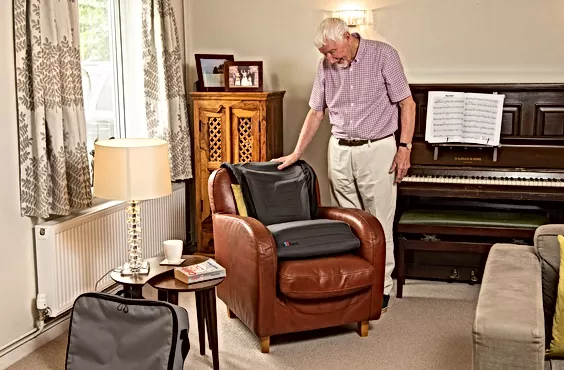With the advances in technology and best practices in the medical field, populations everywhere will be expected to have greater life expectancies. And though with age comes wisdom, age also sometimes means you have trouble standing up. Thankfully, if you’ve thought of it, someone has invented it, as technology helps us once more in the form of various lift assist devices for the elderly.
One option is to use chair lifts. Whether pre-installed or in portable form, there are lift assist chairs that will help you get up in your older age. A lift assist chair may work with electricity or mechanical force, but the principle is the same: the edge of the cushion that’s at the back of the chair lifts up. The same principle is at work in beds that fold upwards such as in hospitals.
Electric versions of chair lifts offer greater control over when the cushion is going up or down, as you can press a button to start and stop. Mechanical versions can eliminate the need to recharge batteries or find an outlet. Non-electric versions often just use pressurized gas to constantly but slowly push upwards. Body weight can overpower the upward force in these cases, but then in turn the same force means the elderly person needs to pull less of their own body weight off of the chair when they try to stand.
As mentioned, these mechanisms can come integrated onto an armchair, but just as often can be bought separately in portable chair lift form to act as lift assist devices for elderly people and their caregivers.
There are other forms of lift assist devices for the elderly. For those who still retain some grip strength despite experiencing some mobility issues, there are crutch-like devices that have wide bases that take the weight off of your feet, and bars covered in rubberized foam in several tiers that act as handles. These offer a way for us to help keep our autonomy in standing, which is an important activity in daily living. While marketed as lift assist devices for elderly people, these same devices are also used by those with arthritis and those recovering from surgery.
For those with caregivers, a lift assist handle might be an easy and unobtrusive way to help. These are essentially just two-sided handles, similar to handles in gym equipment like press machines. The horizontal grip position is much easier to hold and uses less effort than in grip positions used when two people hold hands. Thus with these two sets of handles in one single loop, both the caregiver and elderly person use less effort when the elderly person needs to be pulled up off a chair.
Finally, for when wheelchair use is involved, there are also transfer boards. These are similar in use to transfer boards used by paramedics to move a person from a stretcher onto a gurney but on a smaller scale. They act as bridges from a sofa or dining chair to the wheelchair, removing any hassle from what might otherwise be a logistical problem.
These various lift assist devices for the elderly serve to let us enjoy our long lives and the long lives of our loved ones with more dignity and autonomy than before.


